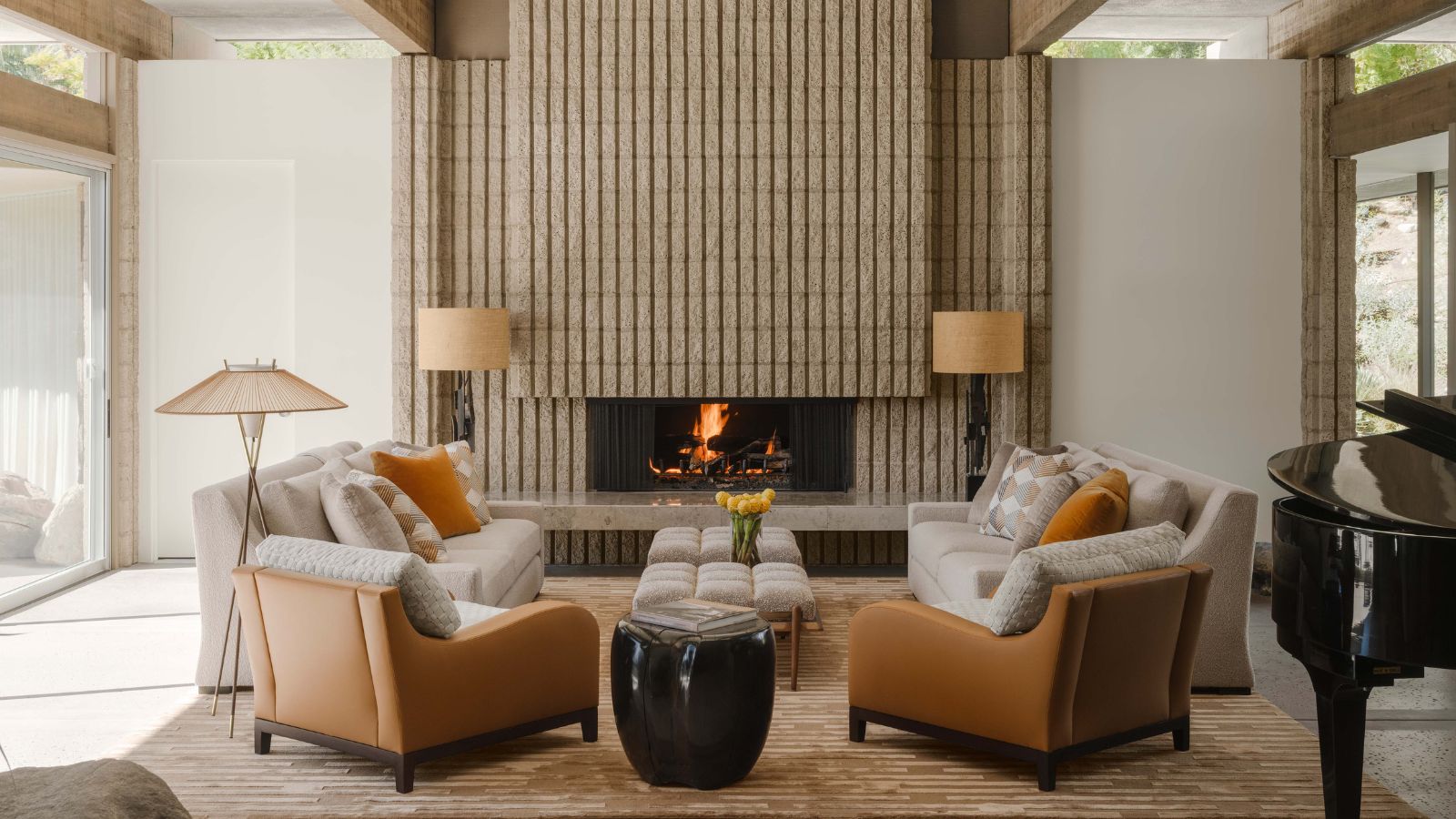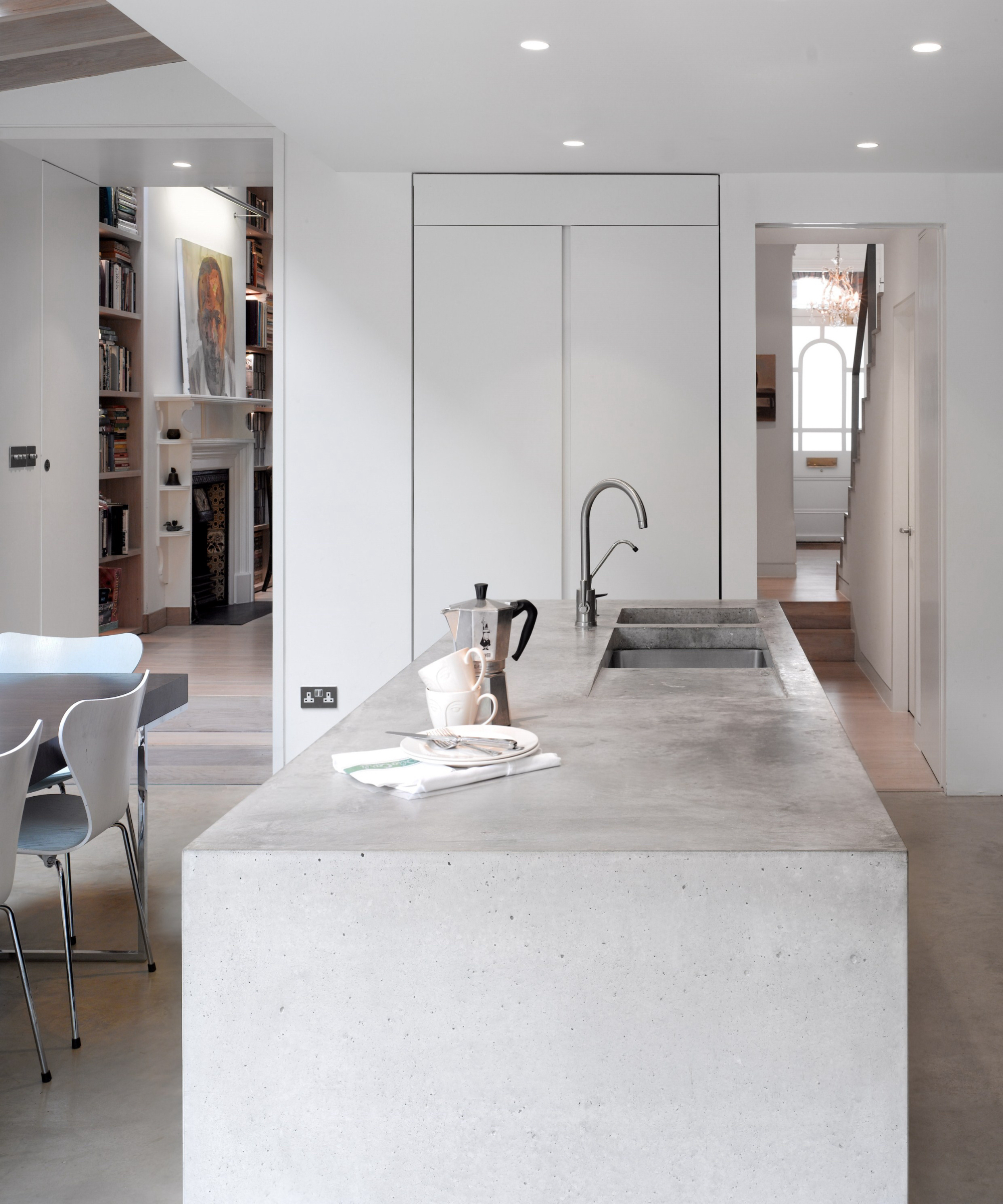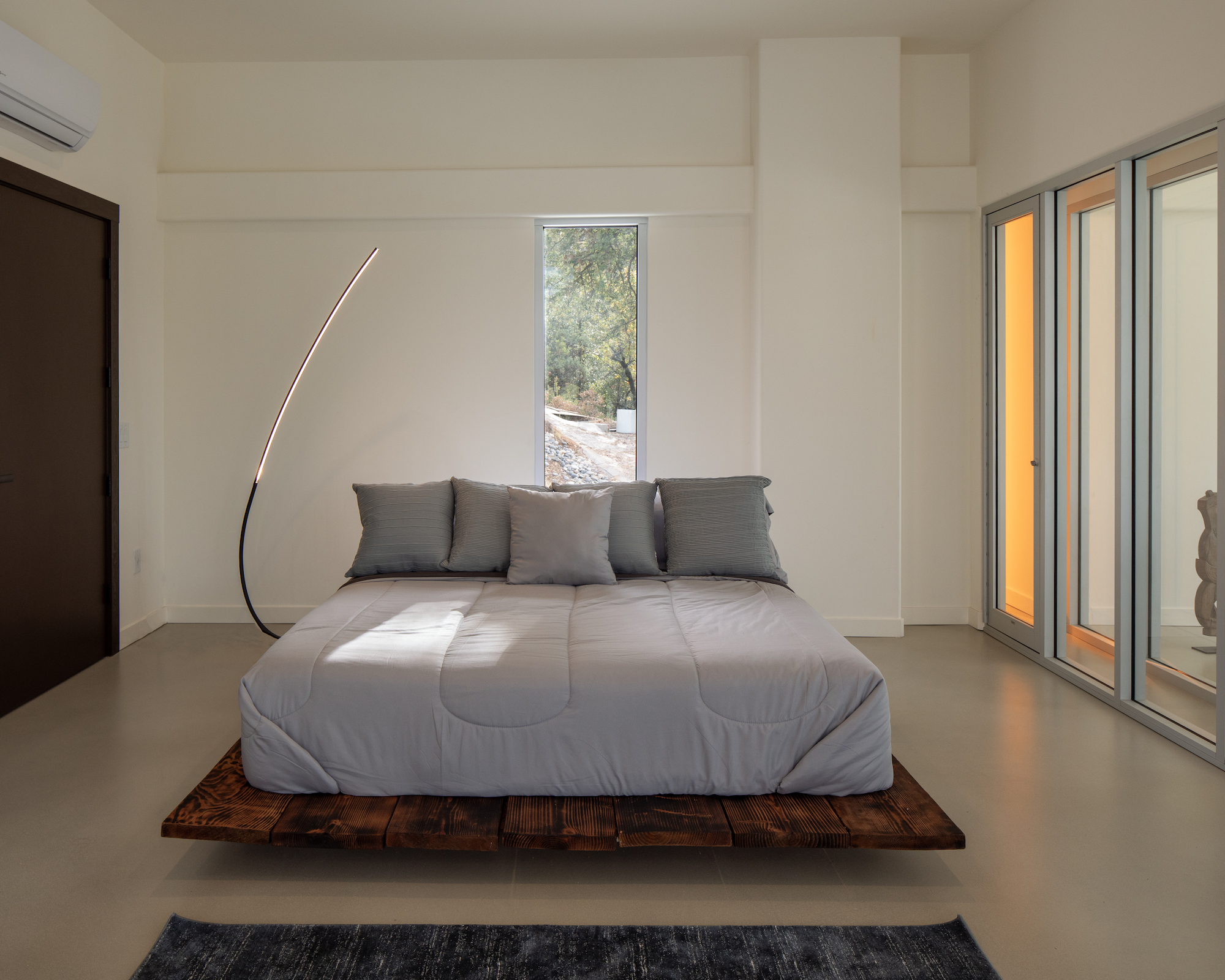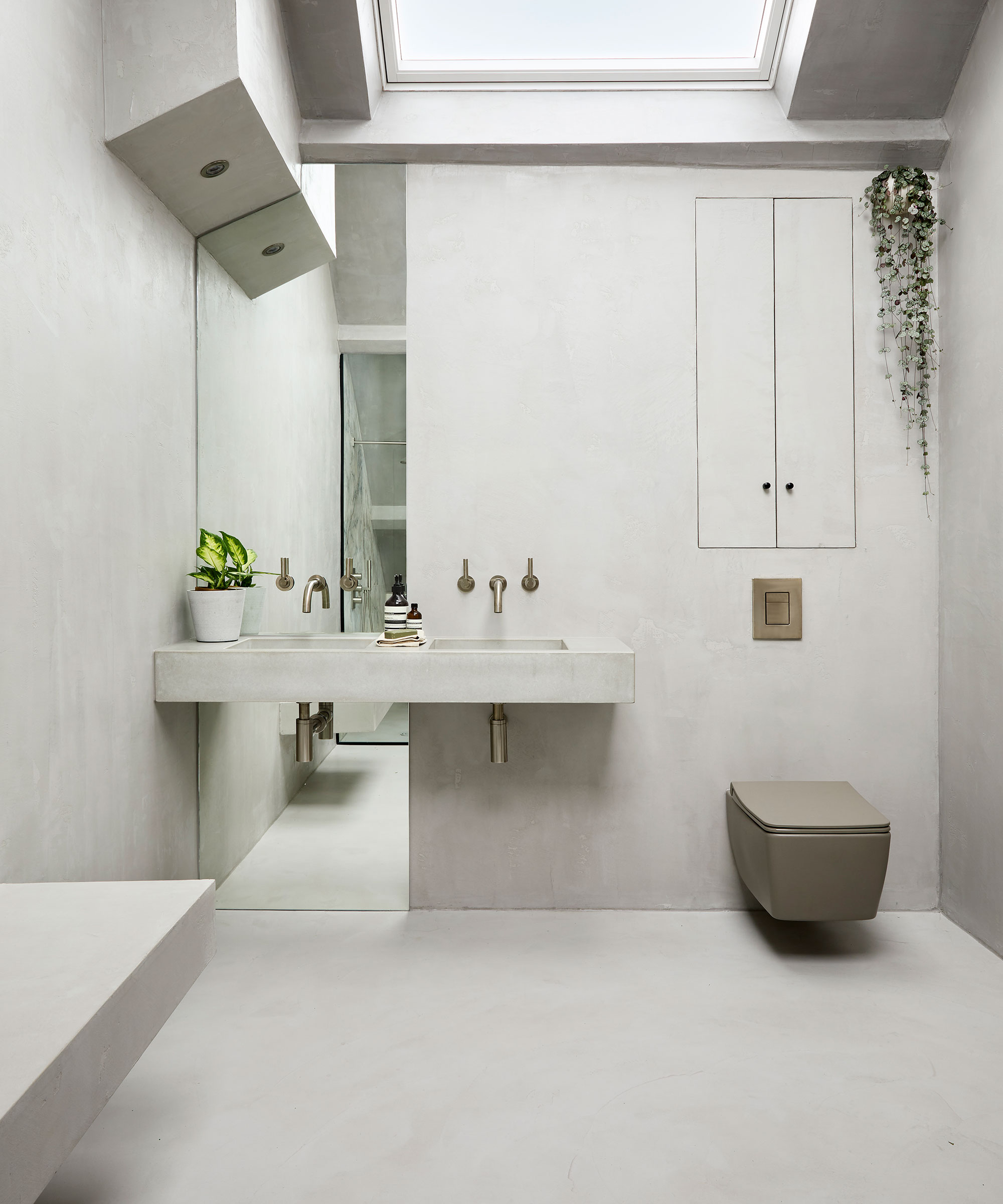
Love the idea of minimalist, monochrome interiors without ornamentation, featuring industrial materials and strong shapes? Then brutalist interior design, which has seen a recent revival in interest, could be worth your attention.
Like the architecture for which the term brutalist was coined, this interior design style was overtaken by others, but the passage of time has seen fresh interest in this raw and functional look. Now designers are translating its materials and shapes into looks that both honor its traditions and suit today’s homes.
Our guide has the lowdown on what brutalist interior design is, and how you might bring its elements into your own home.
What is brutalist interior design?
Brutalist interior design is the name given to the style that followed from brutalist architecture. It’s informed by characteristics of the architecture, including its use of raw concrete and other textural materials like bare brick and metal, and its simple forms. Translated into the elements of interiors these features are typical of what is called brutalist interior design.
You might be familiar with buildings in the brutalist style, and, below, we take a look at its history and features.

What is brutalist architecture?
Brutalism is a movement in modern architecture that emerged after the Second World War. ‘The precursor of the brutalist style is the Bauhaus movement, which emphasized raw exploration of concrete façades and forms,’ says architect and interior designer Hafsa Burt of hb+a Architects.
The first brutalist building is often considered to be Franco-Swiss architect Le Corbusier’s unité d’habitation in Marseille, France, although the term ‘brutalism’ was a later coinage.
Le Corbusier’s building is an apartment block completed in 1952 which also contained communal areas, shops and a hotel-restaurant. It was constructed from béton brut, in other words, raw concrete, and architects in many countries designed civic, cultural, and residential buildings in this brutalist style through the 1950s, 1960s, and 1970s.
Raw concrete is the predominant material of brutalist architecture and it’s also typified by powerful monolithic features; contrasting textures and materials with exposed concrete combined with brickwork that is rough, steel, and wood; and structures and services that are clearly displayed.
Brutalist architecture was succeeded by other movements but architects today remain inspired by its principles. ‘If cleverly used the style can utilize amazing play of light with a focus on space like [Japanese architect] Tadao Ando’s work,’ she says.
What are the characteristics of brutalist interior design?

Brutalist interior design could prove a favorite with those drawn to the timeless interior design style of minimalism.
‘Focus in brutalist interiors is on simple forms, devoid of excessive clutter and excessive finishes, celebrating the volume of space and textured concrete,’ says Hafsa Burt. ‘Architects are more drawn to this style than interior designers because they’re focused on light and space versus ornamentation.’
The features of this style? ‘Clean lines, simple forms, textured plaster, monotone interiors with a single dominant color, framed views and subtle introduction of light, use of exposed concrete slab or walls are dominant characteristics that can turn any interior into this style,’ she explains.
Why would you choose brutalist interior design?

If you live in a brutalist building, brutalist interior design is a natural complement. ‘There’s an honesty in form that this style explores and if the building exterior is “pure” in structure with straight lines, it is easy to continue that style to the interior of a space,’ says Hafsa Burt.
However, as she noted above, the style can be introduced into any interior. Twenty-first-century interiors in the brutalist style are authentic, pure, and simple. They may spurn ornamentation, but the forms are striking, the materials have textural appeal, the color palette is calming, the layouts are comfortably uncluttered, and the furniture is functional, practical, and durable.
Be aware that careful curation is necessary if your aim is to be more sustainable in your interior design. ‘On one hand, the minimalist tendency of this style is in line with the renewed interest in embodied carbon reduction associated with materials,’ says Hafsa. ‘On the other hand, if the dominant material is carbon-intensive concrete then it can have a negative environmental impact.’
Brutalist interior design divides opinion, and it’s certainly not a style for those who want to decorate with maximalism. However, its simplicity certainly does not mean it lacks appeal. A monochrome palette allows attention to its forms and textures. And its typical features can be introduced by incorporating industrial materials in furniture and lighting, opting for neutral palettes, and creating open layouts. For a softer element, houseplants are not out of place, and ensuring you bring in wood will up the quotient of natural materials.







